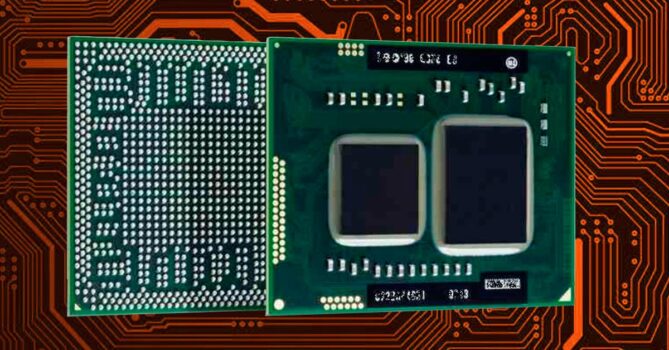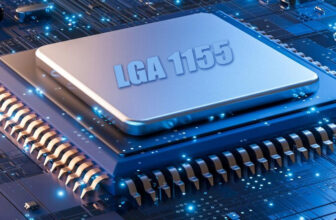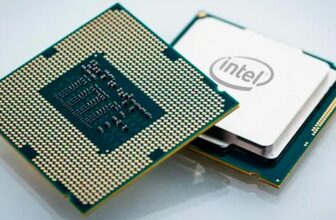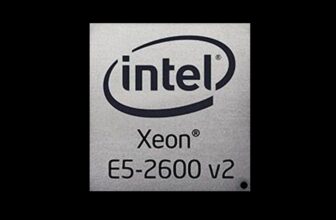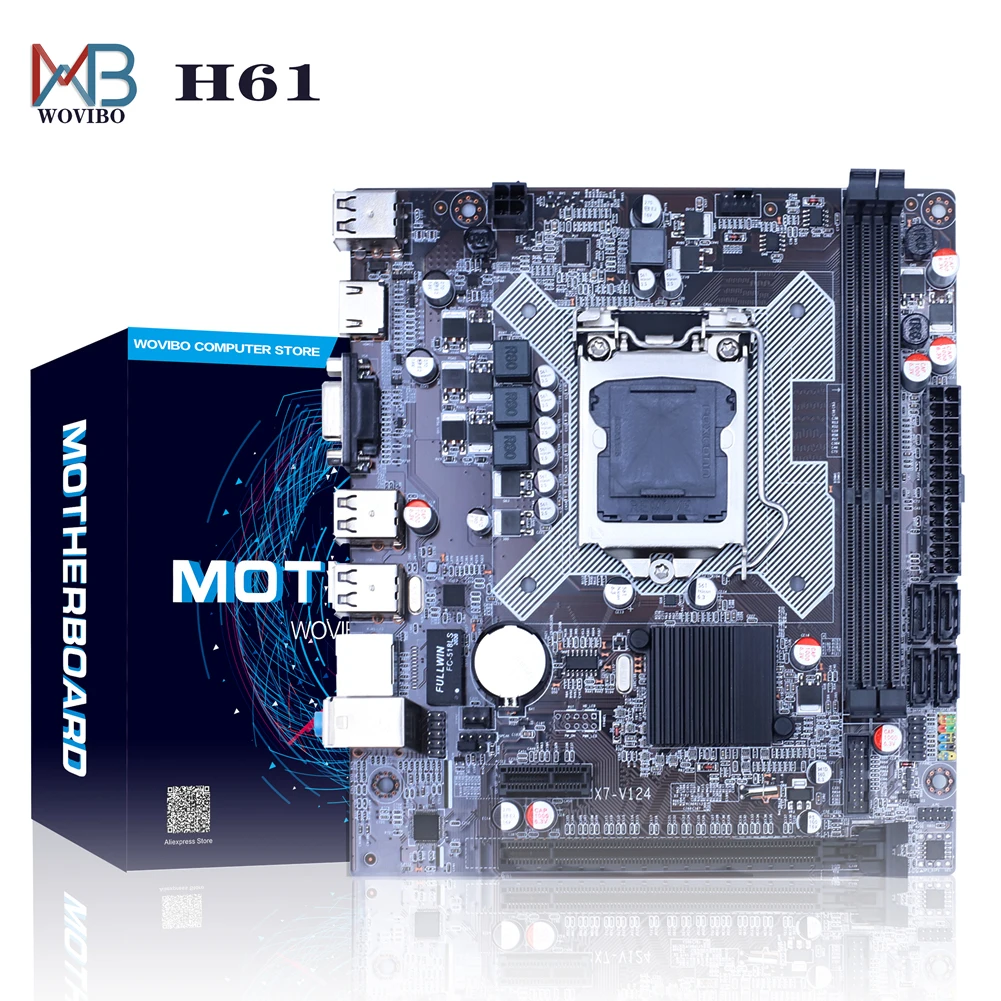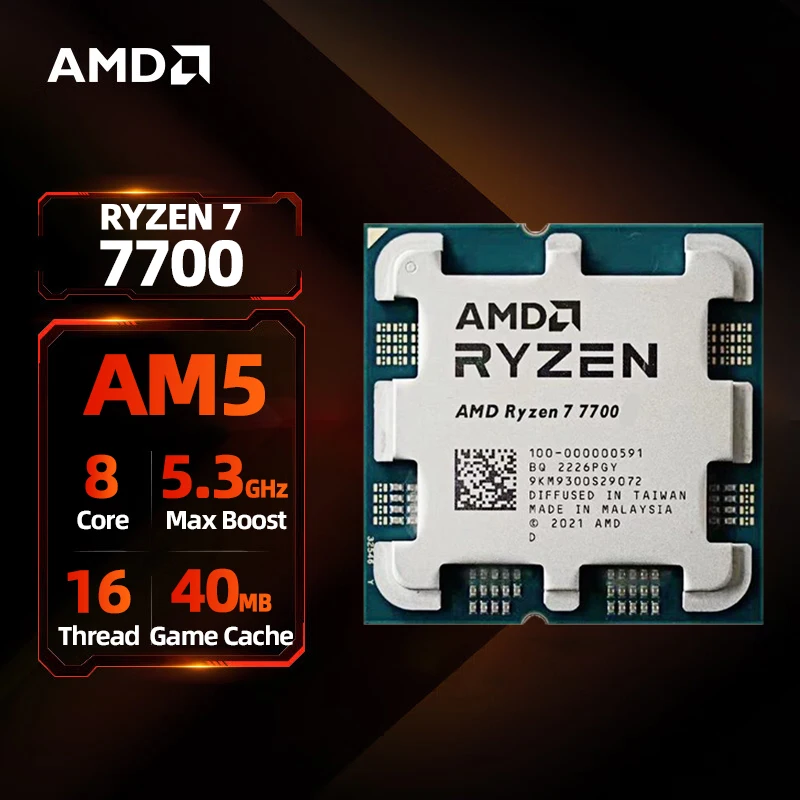O soquete BGA 1288 é usado por processadores da Intel que são soldados diretamente na placa-mãe, sendo destinado principalmente a dispositivos compactos e ultrabooks. Confira abaixo a CPU List – Todos os Processadores Intel BGA1288.
| Product Name | Launch Date | Total Cores | Max Turbo Frequency | Processor Base Frequency | Cache | TDP |
| Intel® Celeron® Processor U3600 | Q1’11 | 2 | 1.20 GHz | 2 MB Intel® Smart Cache | 18 W | |
| Intel® Core™ i3-390M Processor | Q1’11 | 2 | 2.66 GHz | 3 MB Intel® Smart Cache | 35 W | |
| Intel® Core™ i5-480M Processor | Q1’11 | 2 | 2.93 GHz | 2.66 GHz | 3 MB Intel® Smart Cache | 35 W |
| Intel® Core™ i3-380UM Processor | Q4’10 | 2 | 1.33 GHz | 3 MB Intel® Smart Cache | 18 W | |
| Intel® Core™ i5-470UM Processor | Q4’10 | 2 | 1.86 GHz | 1.33 GHz | 3 MB Intel® Smart Cache | 18 W |
| Intel® Core™ i3-380M Processor | Q3’10 | 2 | 2.53 GHz | 3 MB Intel® Smart Cache | 35 W | |
| Intel® Core™ i5-460M Processor | Q3’10 | 2 | 2.80 GHz | 2.53 GHz | 3 MB Intel® Smart Cache | 35 W |
| Intel® Core™ i5-560M Processor | Q3’10 | 2 | 3.20 GHz | 2.66 GHz | 3 MB Intel® Smart Cache | 35 W |
| Intel® Core™ i5-560UM Processor | Q3’10 | 2 | 2.13 GHz | 1.33 GHz | 3 MB Intel® Smart Cache | 18 W |
| Intel® Core™ i5-580M Processor | Q3’10 | 2 | 3.33 GHz | 2.66 GHz | 3 MB Intel® Smart Cache | 35 W |
| Intel® Core™ i7-640M Processor | Q3’10 | 2 | 3.46 GHz | 2.80 GHz | 4 MB Intel® Smart Cache | 35 W |
| Intel® Core™ i7-660LM Processor | Q3’10 | 2 | 3.06 GHz | 2.26 GHz | 4 MB Intel® Smart Cache | 25 W |
| Intel® Core™ i7-680UM Processor | Q3’10 | 2 | 2.53 GHz | 1.46 GHz | 4 MB Intel® Smart Cache | 18 W |
| Intel® Celeron® Processor U3400 | Q2’10 | 2 | 1.06 GHz | 2 MB Intel® Smart Cache | 18 W | |
| Intel® Core™ i3-330UM Processor | Q2’10 | 2 | 1.20 GHz | 3 MB Intel® Smart Cache | 18 W | |
| Intel® Core™ i5-430UM Processor | Q2’10 | 2 | 1.73 GHz | 1.20 GHz | 3 MB Intel® Smart Cache | 18 W |
| Intel® Core™ i5-540UM Processor | Q2’10 | 2 | 2.00 GHz | 1.20 GHz | 3 MB Intel® Smart Cache | 18 W |
| Intel® Core™ i7-660UM Processor | Q2’10 | 2 | 2.40 GHz | 1.33 GHz | 4 MB Intel® Smart Cache | 18 W |
| Intel® Pentium® Processor U5400 | Q2’10 | 2 | 1.20 GHz | 3 MB Intel® Smart Cache | 18 W | |
| Intel® Core™ i5-520E Processor | Q1’10 | 2 | 2.93 GHz | 2.40 GHz | 3 MB Intel® Smart Cache | 35 W |
| Intel® Core™ i5-520M Processor | Q1’10 | 2 | 2.93 GHz | 2.40 GHz | 3 MB Intel® Smart Cache | 35 W |
| Intel® Core™ i5-520UM Processor | Q1’10 | 2 | 1.87 GHz | 1.07 GHz | 3 MB Intel® Smart Cache | 18 W |
| Intel® Core™ i5-540M Processor | Q1’10 | 2 | 3.07 GHz | 2.53 GHz | 3 MB Intel® Smart Cache | 35 W |
| Intel® Core™ i7-610E Processor | Q1’10 | 2 | 3.20 GHz | 2.53 GHz | 4 MB Intel® Smart Cache | 35 W |
| Intel® Core™ i7-620LE Processor | Q1’10 | 2 | 2.80 GHz | 2.00 GHz | 4 MB Intel® Smart Cache | 25 W |
| Intel® Core™ i7-620LM Processor | Q1’10 | 2 | 2.80 GHz | 2.00 GHz | 4 MB Intel® Smart Cache | 25 W |
| Intel® Core™ i7-620M Processor | Q1’10 | 2 | 3.33 GHz | 2.66 GHz | 4 MB Intel® Smart Cache | 35 W |
| Intel® Core™ i7-620UE Processor | Q1’10 | 2 | 2.13 GHz | 1.06 GHz | 4 MB Intel® Smart Cache | 18 W |
| Intel® Core™ i7-620UM Processor | Q1’10 | 2 | 2.13 GHz | 1.06 GHz | 4 MB Intel® Smart Cache | 18 W |
| Intel® Core™ i7-640LM Processor | Q1’10 | 2 | 2.93 GHz | 2.13 GHz | 4 MB Intel® Smart Cache | 25 W |
| Intel® Core™ i7-640UM Processor | Q1’10 | 2 | 2.27 GHz | 1.20 GHz | 4 MB Intel® Smart Cache | 18 W |
| Intel® Celeron® Processor P4505 | Q1’10 | 2 | 1.86 GHz | 2 MB Intel® Smart Cache | 35 W | |
| Intel® Celeron® Processor U3405 | Q1’10 | 2 | 1.06 GHz | 2 MB | 18 W | |
| Intel® Core™ i3-330E Processor | Q1’10 | 2 | 2.13 GHz | 3 MB Intel® Smart Cache | 35 W | |
| Intel® Core™ i3-330M Processor | Q1’10 | 2 | 2.13 GHz | 3 MB Intel® Smart Cache | 35 W | |
| Intel® Core™ i3-350M Processor | Q1’10 | 2 | 2.26 GHz | 3 MB Intel® Smart Cache | 35 W | |
| Intel® Core™ i5-430M Processor | Q1’10 | 2 | 2.53 GHz | 2.26 GHz | 3 MB Intel® Smart Cache | 35 W |
| Intel® Core™ i7-660UE Processor | Q1’10 | 2 | 2.40 GHz | 1.33 GHz | 4 MB | 18 W |
O termo BGA (Ball Grid Array) significa que os processadores usam uma matriz de esferas de solda para conectar-se à placa-mãe, diferentemente dos processadores LGA (Land Grid Array), que usam pinos.
Processadores Compatíveis
O BGA 1288 foi usado em várias gerações de processadores Intel, principalmente nas séries Core e Xeon. Alguns exemplos incluem:
Intel Core: Usado em várias linhas de produtos, desde os i3 até os i7 em gerações como Haswell, Broadwell, Skylake e posteriores.
Intel Xeon: Algumas versões de Xeon, destinadas a estações de trabalho portáteis, também utilizam este soquete.
Vantagens e Desvantagens
Vantagens: Compactação: Ideal para dispositivos pequenos, como ultrabooks e tablets.
Desempenho térmico: A conexão direta com a placa-mãe pode melhorar a eficiência térmica.
Desvantagens:
Limitado a atualizações: Processadores soldados não podem ser substituídos, limitando a capacidade de atualização.
Complexidade de reparo: Reparar ou substituir processadores defeituosos é mais complicado.
Uso Típico:
O soquete Intel BGA 1288 é encontrado principalmente em laptops, ultrabooks e dispositivos móveis que priorizam tamanho compacto e baixo consumo de energia. Ele também aparece em estações de trabalho portáteis que requerem mais potência de processamento, especialmente aquelas que usam CPUs Xeon para tarefas profissionais.

